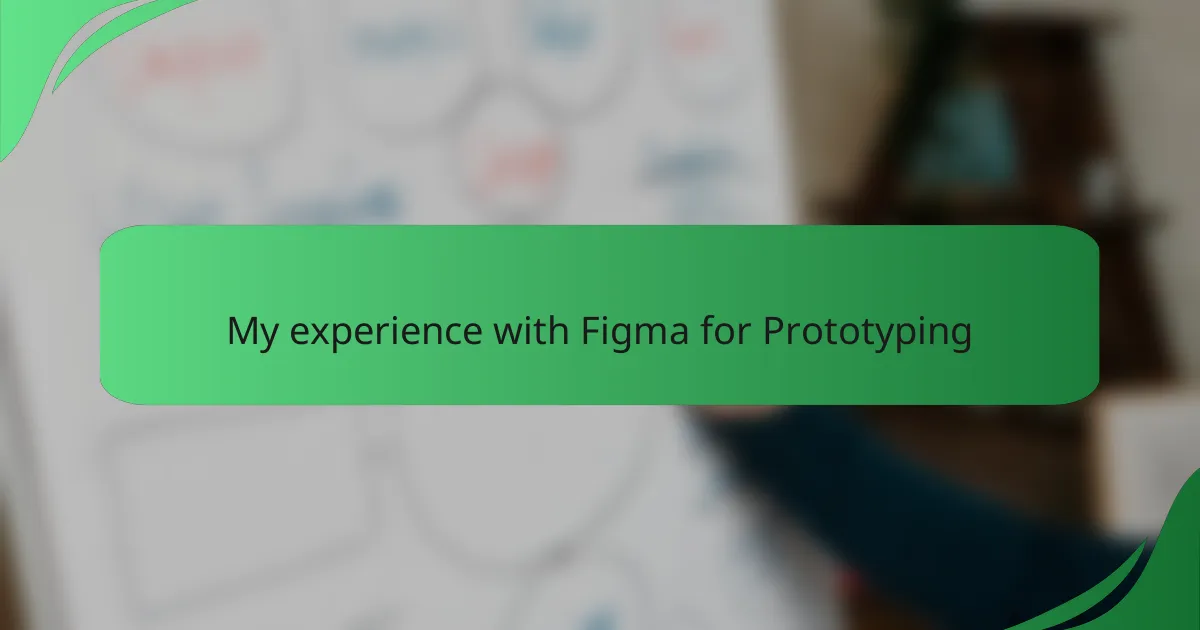Key takeaways Streamlining workflows in Photoshop enhances productivity and creativity, reducing time on repetitive tasks. Utilizing tools like keyboard shortcuts, actions, and plugins can significantly improve efficiency. Implementing a habit of project review and adapting workspace settings results in better organization and focus. Key interface design principles such as clarity, consistency, and feedback improve user […]
Key takeaways Interface design principles like clarity and consistency enhance user engagement and navigation ease. Prototyping is vital for visualizing ideas, identifying issues, and fostering collaboration among team members. Figma’s real-time collaboration and interactive components streamline the prototyping process, allowing for quick iteration and feedback. Implementing structured approaches and user-focused tips leads to more effective […]
Key takeaways Interface interaction design prioritizes user experiences by focusing on intuitive navigation, accessibility, and feedback mechanisms. Collaboration enhances creativity and ownership among team members, making communication and regular check-ins essential for successful project outcomes. Adobe XD’s features, including real-time collaboration and intuitive design tools, significantly streamline the design process and foster dynamic teamwork. Challenges […]
Key takeaways Usability testing is essential for improving user experience and identifying design issues that may not be intuitive to users. Setting clear objectives and recruiting diverse participants can greatly enhance the insights gained during testing sessions. Analyzing both qualitative and quantitative feedback is crucial for understanding user behavior and making meaningful improvements. Empathy towards […]
Key takeaways Interface interaction design focuses on creating seamless user experiences through usability, accessibility, and satisfaction. Figma plugins enhance design workflows by automating repetitive tasks, fostering collaboration, and providing access to diverse design resources. Popular plugins like Content Reel and Unsplash significantly improve efficiency and creativity in the design process. Utilizing plugins can lead to […]
Key takeaways Balancing aesthetics and functionality is crucial for creating an engaging user experience; both elements must complement each other without compromising usability. A well-thought-out color palette and simple layout can enhance user perception, build trust, and improve overall interaction with the website. Consistency in design helps users feel more comfortable and familiar, encouraging them […]
Key takeaways Effective interface interaction design enhances user experiences by focusing on engagement, feedback, accessibility, and consistency. Understanding different scrolling types and implementing smooth transitions can significantly improve user retention and interaction. Testing designs across devices and providing clear visual cues are essential for successful and consistent scrolling implementation. Incorporating storytelling through scrolling can enhance […]
Key takeaways Emphasize a user-centric approach to create intuitive and seamless experiences. Wireframing facilitates communication and collaboration, enhancing the design process. Keep designs simple and focused on functionality to clarify concepts and speed up development. Involve users early and regularly in the process to gather valuable feedback and insights. Introduction to Interface Interaction Design Interface […]
Key takeaways Usability is crucial in interface design, focusing on intuitive navigation, clear labeling, and responsive design to enhance user experience. Challenges for new users on platforms like Shopify include overwhelming interfaces and inconsistent design patterns, hindering usability. Implementing practical improvements such as simplified navigation, tooltips, and user testing can significantly boost usability and customer […]
Key takeaways User journey maps visualize the user experience, enhancing empathy and understanding of user needs, frustrations, and motivations. Key elements in journey maps include user personas, stages of the journey, emotions, touchpoints, and pain points. Lucidchart offers features like real-time collaboration and customizable templates, making the mapping process intuitive and efficient. Effective mapping requires […]









